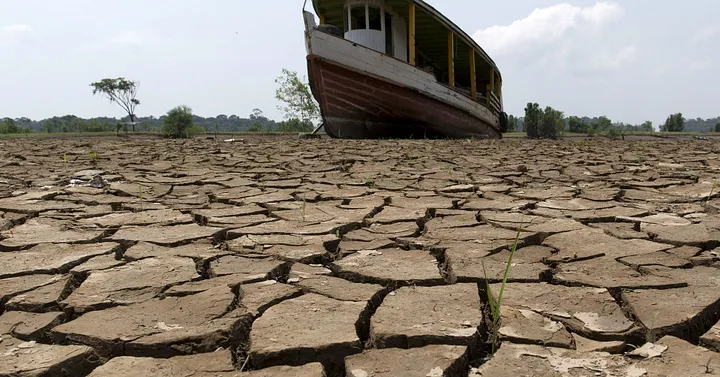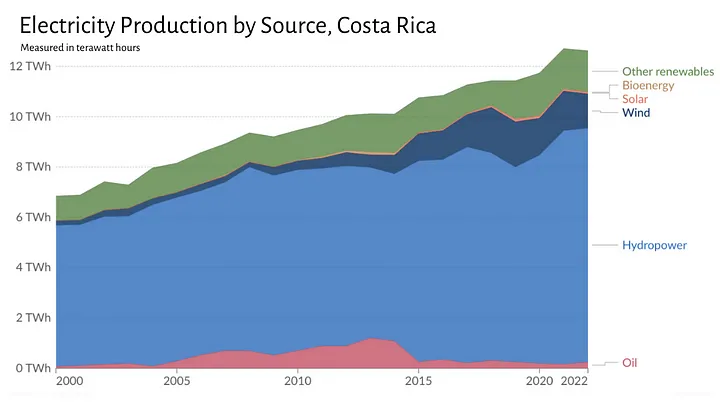Author: Kiersten Sundell

Costa Rica, like many tropical nations, follows a familiar annual pattern: half of the year is dry, and the other half is rainy. But with climate change rapidly accelerating as the years march on, the Costa Rican dry season has gotten longer and drier, posing a lethal threat to the country’s main energy source.
According to Our World in Data, Costa Rica’s electricity grid has been 99% percent decarbonized since 2021, and close to 100 percent of the population has access to electricity. This is an incredible feat, especially considering that two decades ago the country had half of the electricity that they do today. As of 2023, they boasted 12.6 TWh, compared to 6.8 TWh in 2000.
So how did they manage such rapid clean expansion?
Well the majority of the country’s electricity comes from a mix of hydro, geothermal, and wind, putting it in the league of innovative countries like Iceland, Norway and New Zealand. What sets Costa Rica apart is that it’s a less developed nation with a much smaller economy.

Their current energy feats are thanks to focused public policies that reduce reliance on fossil fuels and achieve energy autonomy. Despite how great this all seems, their energy strategy is being threatened by climate change more with every passing year.
Why is this?
They rely on the country’s abundant natural resources to produce energy — namely hydro. In the past few years, Costa Rica’s annual dry season has gotten longer and more brutal, with spells of drought drying up some hydro-dependant rivers completely. Climate change will undoubtedly accelerate as time goes on, meaning that these brutal dry spells may very likely destroy the rich hydroelectric capacity in the country and force them to turn to other options.
Considering that 75% of the country’s electricity is hydro, this is a big deal.
Luckily, the country happens to have 800 miles of coastline, some of which would be prime real estate for a nuclear plant. If Costa Rica could build just a couple of nuclear plants, the hydropower capacity it is losing to climate change could be made up with a power source that is equally clean, reliable, and not nearly as susceptible to seasonal drought.
What do you think? Can Costa Rica’s climate vulnerability benefit from nuclear?
Check out the full video here and let us know your thoughts!


